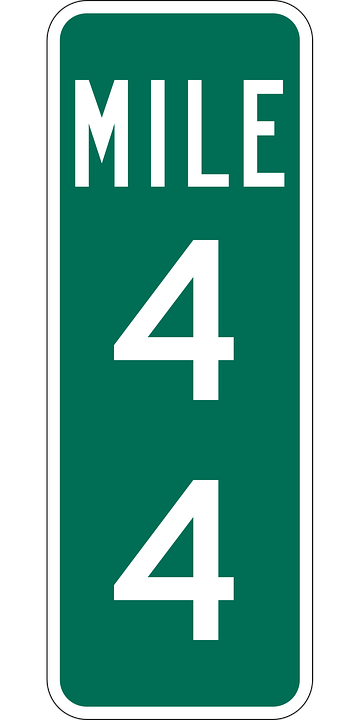In this series of articles, I will post ten simple ideas from chapters in The Ernst & Young Business Plan Guide (3rd edition). This fifth post in the series brings out ten simple ideas from Chapters 5 through 7.
Introduction

Image Source: pixabay.com
License: CC0, Public Domain

Image Source: pixabay.com
License: CC0, Public Domain
Posts one through four in this series covered the threefold purpose of business plans as a planning device, a rear-view mirror, and a fund raising tool. This post on chapters 5, 6, and 7 from The Ernst & Young Business Plan Guide (3rd edition) is the first post to examine the business plan itself. Future posts discussing the actual contents of the business plan will cover chapters 8 through 16 which comprise the remainder of section 2 of the book. Finally, the closing section of the book, "Other resources for entrepreneurs", will be covered with a post or two about chapters 17 and 18.
The three chapters under discussion in today's post are titled Contents, Executive Summary, and General Business Description. In each of these chapters (and also upcoming chapters from Part II: An In-Depth Look at a Business Plan), the chapter opens with a conceptual discussion of the relevant portion of the business plan, moves on to an example business plan from a hypothetical company known as Good Foods Incorporated or GFI, then closes with a discussion of the strengths and weaknesses of the example plan. The remainder of this post will focus on ten simple ideas that were mined from the relevant chapters.

Ten Simple Ideas from Chapters 5 through 7: Contents, Executive Summary, and General Business Description
1.) Every business plan should have a table of contents with some standard characteristics.
In brief, the table of contents should not contain page numbers, and it should be organized by "sections", not "chapters". Further, it should only list top-level sections. Subsections and lower level detail are omitted. As we learned in Part I, as a planning device, the business plan is under constant revision, so page numbers and subsections may change frequently. The table of contents reflects this reality.

Image Source: pixabay.com
License: CC0, Public Domain

Image Source: pixabay.com
License: CC0, Public Domain
2.) The "Executive Summary" section comes first but it is written last.
The authors cite the old adage, "Tell 'em what you're going to tell them; tell 'em; and "Tell 'em what you told them." The executive summary fulfills the first clause. It describes in what the remainder of the plan is going to say.
A two-fold reason is given for writing the executive summary last. First, until you have written the rest of the business plan, you may not have all of the information that you'll need to complete the executive summary, which may cause it to be vague or shallow. Second, by writing it first, you would run the risk of placing constraints on the content in the remainder of the document, since you'd be reluctant to contradict or rerwite the executive summary.
3.) The executive summary must generate immediate interest.
The authors point out that many venture capitalists get so many unsolicited proposals that it is very common for them to read the executive summary and nothing more. Thus, this section of the business plan must grab the reader's attention and offer a compelling reason for the reader to expend the effort required to venture on to the rest of the document.
As noted in previous posts, there is a balancing act between the dramatic and truthfulness. Like the rest of the business plan, the executive summary must be accurate, and its tone should be business-like, but it must also create a sense of excitement without hype.
4.) One proposed format for the executive summary is to mirror the organization of the business plan.
The authors note that there are many different ways to organize the executive summary, but they only propose one. In their template, the executive summary follows the organization of the business plan, itself, sequentially focusing on most of the major functional areas of the business.
The authors note that it may be appropriate to include a personal message from the executive at the end of the executive summary, or that such a message may be included in an attached cover letter.
5.) In the executive summary, along with the functional review of the business, it may be good to also include cursory coverage of the principals' backgrounds and qualifications.
In the sample provided from GFI, the principal officers are named and their backgrounds are described briefly. According to the discussion at the end of the chapter, this helps to establish credibility.

Image Source: pixabay.com
License: CC0, Public Domain

Image Source: pixabay.com
License: CC0, Public Domain
6.) In addition to functional discussion, it is often useful to include business milestones in the executive summary.
The example summary from GFI is very light on milestones, saying only that one portion of the product line is complete and the rest will be ready soon. In the subsequent discussion, the authors note that a more detailed list of past and future milestones would give a reviewer a more compelling vision.
7.) The "Company Description" section answers questions about what the company does, how mature it is, and what it's objectives are.
Many details about the company will be fleshed out in subsequent sections, so a high level of detail is not required in this section of the document. It should, however answer questions like: Who are the customers? What sector does it occupy? What are its products or product lines? Where is it headquartered and where will it do business?
Additionally, the company description should tell the reader the business' phase of life. i.e. is it a start-up? a mature business? Does its product line already exist?
Finally, the statement of objectives will be important to the reviewer, and may be a good way to generate interest. The objectives must seem to be realistic and attainable.
8.) The "Company Description" section should discuss the leadership team in more detail than the executive summary, but coverage should fall short of exhaustive.
This discussion lets the reviewer assimilate the information about the corporate product line, objectives, and leadership skills in order to generate confidence in the ability of the team to accomplish the goals.
9.) The "Company Description" section should help investors believe that they are placing their money in an investment with acceptable risk.
This was one of the shortcomings from the GFI example business plan that came to light in the following discussion. Discussion of product lines, objectives, and leadership team all need to reassure a potential investor that their money will be in safe keeping. The example business plan fell short on this by omitting information about business objectives.
10.) The "Company Description" section should help potential investors to know their exit strategy before they commit their money.
Investors live in a world of defined lifetimes, and they want to be be able to see that a particular investment will pay dividends within their acceptable time horizon. A robust description of product lines, objectives, and leadership helps them to see how an investment in your business will complement their own objectives and timelines.


Image Source: pixabay.com
License: CC0, Public Domain

Image Source: pixabay.com
License: CC0, Public Domain
Conclusion
In this post, we looked at ten simple ideas from chapters 5, 6, and 7 in The Ernst & Young Business Plan Guide (3rd edition). These chapters from Part II of the text discussed the overall content, the executive summary, and the company description. One of the key ideas included the fact that the executive summary appears first, but should be written last. Other insights included the notion that the sections should be written from a perspective that keeps the investors in mind. Investors want a compelling story, assurances that their money will not be exposed to undue risk, and a clear exit strategy. These sections (and all of them, really) should be written in a way to show investors how those expectations will be met.
Check back soon for the next post covering ten simple ideas from chapters 8 and 9, also in Part II of the book. Chapter 8 is about the Products and Services section, and chapter 9 is about the Marketing Plan section.
45% of the rewards from this post will go to the Rustin Golden Knights Marching Band

Previous Articles in the series
Part I: The purpose of a business plan
- [Ten Simple Ideas] The Ernst & Young Business Plan Guide: Chapter by Chapter - Series Overview and Chapter 1
- [Ten Simple Ideas] The Ernst & Young Business Plan Guide: Chapter by Chapter - Chapter 2 - Who Reads the Business Plan?
- [Ten Simple Ideas] The Ernst & Young Business Plan Guide: Chapter by Chapter - Chapter 3 - Legal forms of a business
- [Ten Simple Ideas] The Ernst & Young Business Plan Guide: Chapter by Chapter - Chapter 4 - Due Diligence
Part II: An in-depth look at a business plan
- This Post: [Ten Simple Ideas] The Ernst & Young Business Plan Guide: Chapter by Chapter - Chapters 5-7 - Contents, Executive Summary & Company Description
Thank you for your time and attention.

Sign up for your own Steem account with this invitation from busy.org - https://busy.org/i/@remlaps.
As a general rule, I up-vote comments that demonstrate "proof of reading".

Steve Palmer is an IT professional with three decades of professional experience in data communications and information systems. He holds a bachelor's degree in mathematics, a master's degree in computer science, and a master's degree in information systems and technology management. He has been awarded 3 US patents.

Steve is a co-founder of the Steemit's Best Classical Music Facebook page, and the @classical-music steemit curation account.
| Follow: @classical-music | Follow: @classical-radio | Classical Music discord invitation: https://discord.gg/ppVmmgt |  Classical Music Logo by ivan.atman Classical Music Logo by ivan.atman |


Downvoting a post can decrease pending rewards and make it less visible. Common reasons:
Submit
Congratulations! Your post has been selected as a daily Steemit truffle! It is listed on rank 15 of all contributions awarded today. You can find the TOP DAILY TRUFFLE PICKS HERE.
I upvoted your contribution because to my mind your post is at least 6 SBD worth and should receive 115 votes. It's now up to the lovely Steemit community to make this come true.
I am
TrufflePig, an Artificial Intelligence Bot that helps minnows and content curators using Machine Learning. If you are curious how I select content, you can find an explanation here!Have a nice day and sincerely yours,

TrufflePigDownvoting a post can decrease pending rewards and make it less visible. Common reasons:
Submit